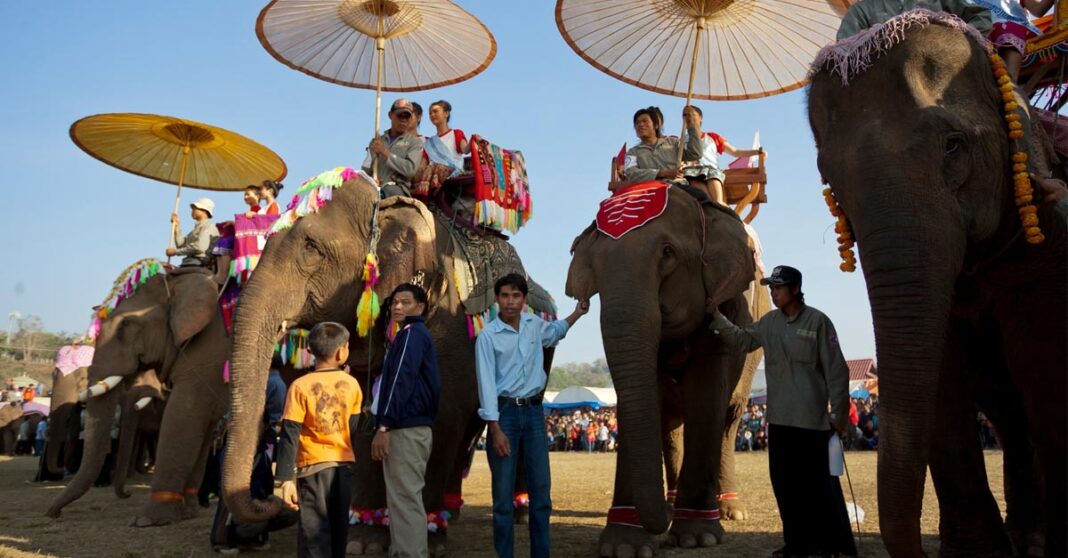Xayabouly Province is currently home to 220 registered domestic elephants. Of these, 143 are actively working within the province, while the others are active in different areas outside the province, Kenthao district deputy governor Somsy Saophila noted during a meeting on 3 July.
Domestic elephants are elephants raised by humans for various purposes, such as transportation, farming, or performances. They are considered the direct property of their owners and must be legally registered, which includes creating a ‘photo ticket’ that records the elephant’s details.
In addition to the domestic elephants, approximately 80 to 100 wild elephants live in Nam Pui National Park, which spans three districts in the province: Phieng, Pak Lai, and Thongmixay, Somsy added.
Registered elephants are officially counted and monitored by authorities and benefit from government and conservation programs, such as those led by the Elephant Conservation Center (ECC) in Xayabouly.
The ECC provides welfare, breeding, and veterinary care, particularly for elephants handed over by government order or rescued from illegal trade.
These registered elephants also play a central role in the province’s annual elephant festival, which promotes both conservation and cultural heritage.
During the meeting, authorities evaluated the implementation of an elephant management and conservation agreement, emphasizing the important role elephants have in local communities and the need for their ongoing protection.
The Thursday gathering aimed to encourage collaboration and gather insights to ensure the agreement’s effective enforcement.
According to the World Wildlife Fund (WWF) Laos, the country, once known as “Lane Xang” or “Land of a Million Elephants”, now has only between 500 and 1,000 elephants left, about one-third of the population recorded two decades ago.
WWF also warned that around 10 elephants die each year for every one to two born, placing the species at risk of disappearing entirely from Laos.



